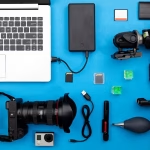Introduction to AI-Generated Art
Understanding AI Art Generation
AI-generated art is the process of creating visual content with the aid of artificial intelligence. This technique involves using algorithms that can learn from a vast array of images and styles.
The AI can then produce new, unique pieces of art based on input it receives, often in the form of text prompts. What sets AI art apart is its ability to generate complex and captivating visuals that might be challenging, time-consuming, or even impossible for human artists to create manually.
Artists, designers, and hobbyists are exploring this frontier to unleash creativity in new and unexpected ways.
Understanding AI art generation means getting familiar with the tools, processes, and concepts that power these artificial muses.

Trends in AI Art Creation
The trend of AI art is surging. Artists now use AI to produce works that resonate on a wide scale.
Many creators are exploring unique visual languages with these tools. They combine texts and inputs to craft images unseen before.
In some cases, AI art even mirrors traditional styles, making it hard to spot the difference. AI-generated art has also started to feature in top galleries and online platforms.
This shift in art creation can affect the art world deeply. AI art’s rise suggests a future where anyone can express their creativity.
Preparing to Create AI-Generated Art
Choosing the Right AI Art Software
The first step in making AI art is picking the right software.
Look for one that suits your style and needs. There are numerous options out there and new ones keeps emerging.
Top AI Art Generators
The world of AI art generation is evolving rapidly, with new tools and features emerging all the time. Here’s my take on some of the best options available:
- Known for: Stunning, highly detailed images with a painterly quality.
- Best suited for: Fantasy art, concept art, and surreal landscapes.
- Key features: Excellent at interpreting abstract prompts, strong community aspect with shared Discord servers.
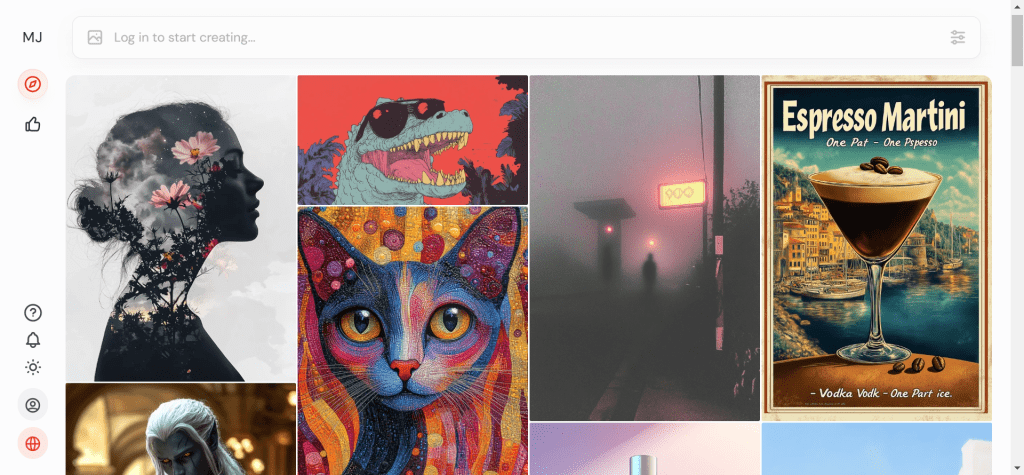
- Known for: Highly accurate text-to-image generation.
- Best suited for: Realistic scenes, product mockups, and illustrations.
- Key features: Excellent understanding of text prompts, ability to generate images in various artistic styles.
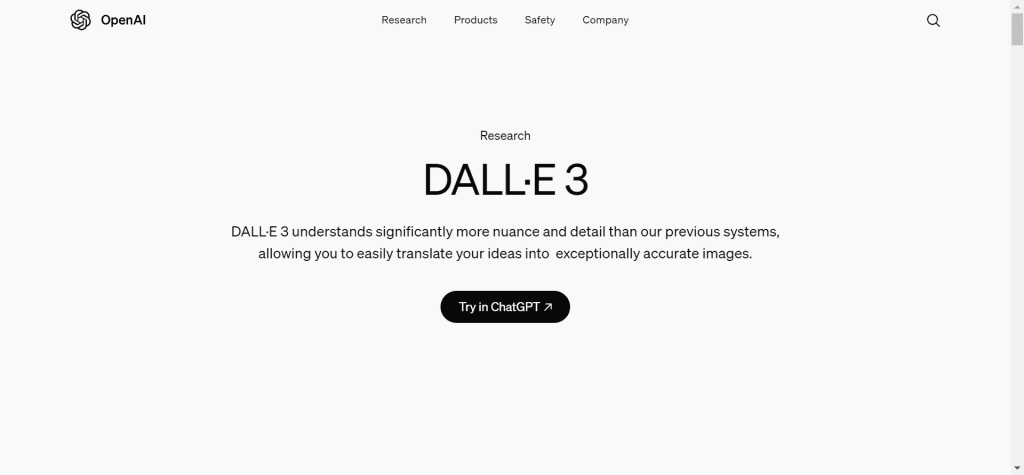
- Known for: Open-source flexibility and customization.
- Best suited for: Tech-savvy users who want to fine-tune their AI art experience.
- Key features: Can be run locally on powerful PCs, huge variety of community-created models and plugins.

- Known for: User-friendly interface and quick results.
- Best suited for: Beginners and those looking for quick, quality outputs.
- Key features: Easy-to-use web interface, good balance of quality and speed.
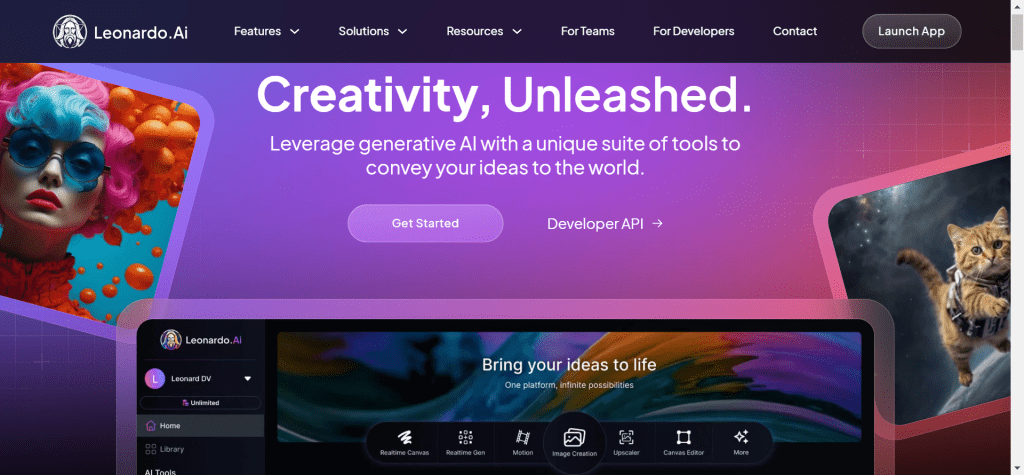
- Known for: Unique collaborative and evolutionary approach to AI art.
- Best suited for: Experimental artists and those interested in “breeding” images.
- Key features: Allows users to combine and evolve existing images, strong community aspect with shared creations.
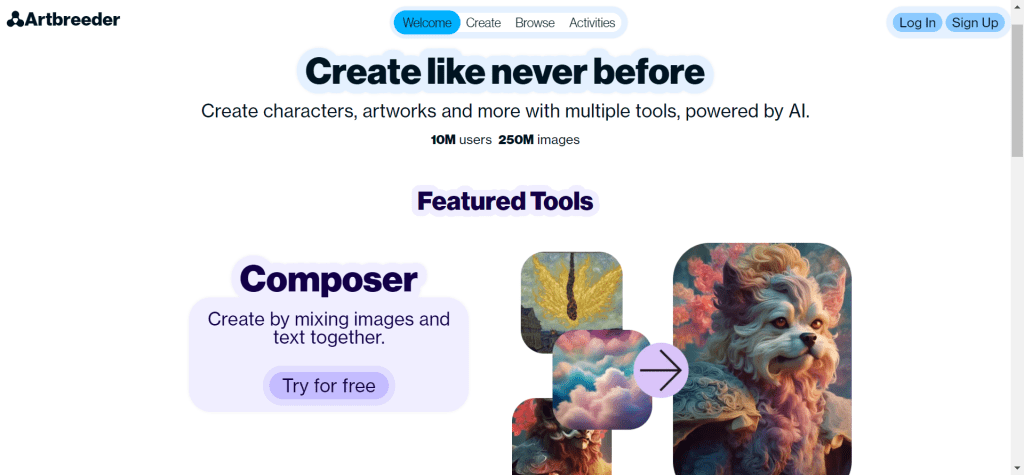
- Known for: Integration with Adobe’s creative suite.
- Best suited for: Professional designers and Adobe users.
- Key features: Seamless workflow with other Adobe products, focus on commercially safe, original content generation.
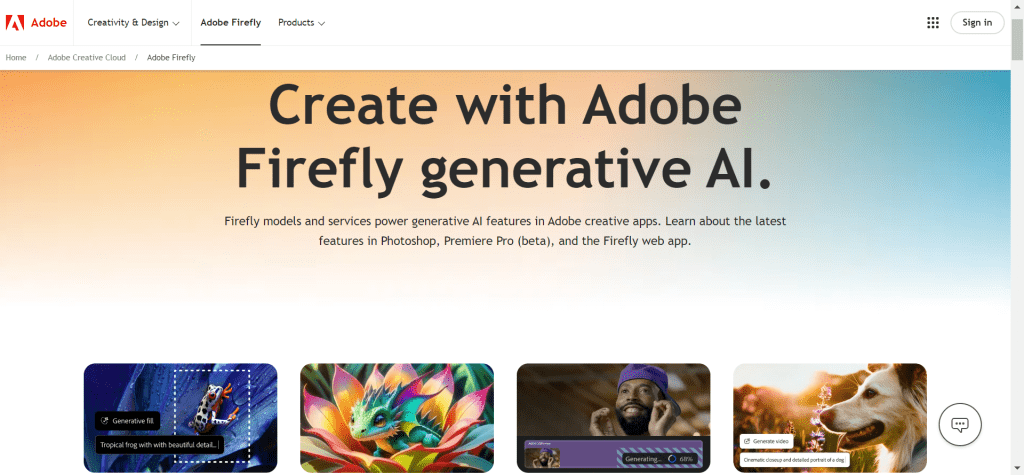
- Known for: Accessibility and ease of use.
- Best suited for: Quick, casual image generation.
- Key features: Integrated with Bing search, free to use.
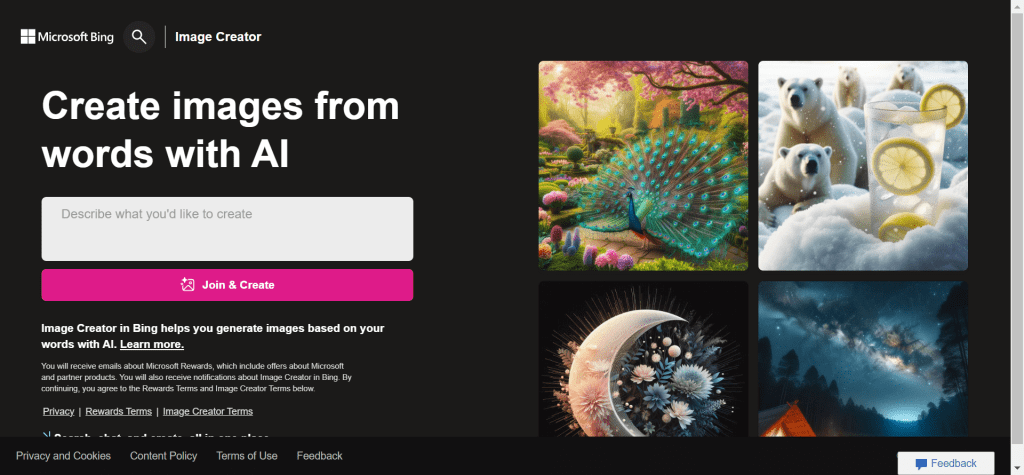
Remember: The field of AI art generation is rapidly evolving. New features and tools may emerge soon. Stay updated on the latest developments.
Which of these AI art generators catches your eye? Have you tried any of them before? Let me know if you want me to dive deeper into any specific aspects or drop tell us your experience in the comments below.
Setting Up Your Workspace
When setting up your workspace for creating AI art, it’s important to ensure an environment that fosters creativity and efficiency.
First, choose a quiet area free from distractions. This space should have good lighting to reduce eye strain during long sessions.
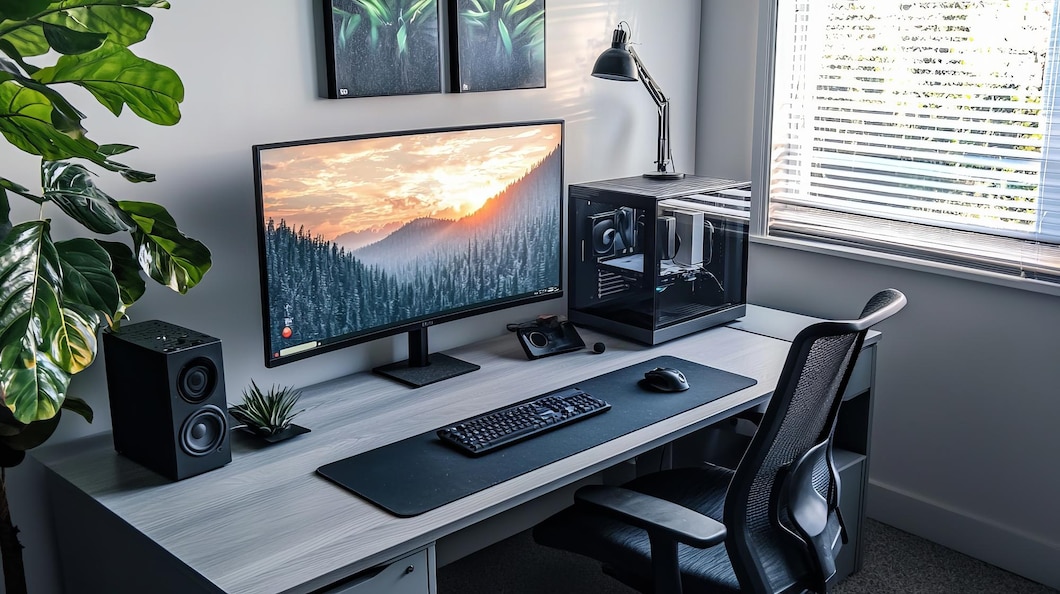
You’ll need a computer with sufficient processing power and a reliable internet connection, as AI art software can be demanding. Keep your workspace organized with easy access to resources like tutorials and inspiration material.
Last, invest in ergonomic furniture to maintain comfort during your artistic endeavors.
From Text to Visuals: Making Art with AI
Crafting Descriptive Prompts for AI
Turning words into images is a unique feature of AI art tools. To craft effective prompts, focus on clarity and detail.
Think about what you want the AI to recreate: colors, themes, and emotions. Be as precise as possible to guide the AI.
For example, “a serene lake at sunrise with vivid orange hues” gives a clear picture. Keywords can also direct the style, like “impressionist” or “surreal.”
Experiment to see how different prompts change the outcome. With practice, you’ll master the art of prompt crafting.
Fine-Tuning Images with AI Tools
Once your AI has created a rough image, it’s time to refine it. That’s where fine-tuning tools come in tools like Adobe Photoshop.
Start by adjusting basic elements like color, brightness, and contrast. These can change the mood of your piece greatly.
Next, move to more complex edits. You can alter textures, add filters, or transform shapes. Use layers to work on different parts without affecting the whole. Some AI art software lets you tweak styles with sliders.
This can include changes to brush size or stroke intensity. Play with these to see drastic effects. Remember, small edits can have big impacts. Keep tweaking until you love your artwork. Don’t rush this stage.
Detailed work now could mean a higher sale price later. So, take your time, experiment, and have fun with the fine-tuning process.
Selling Your AI-Generated Artwork
Exploring Marketplaces for AI Art
Once your AI-generated art pieces are ready, it’s time to share them with the world. Here are popular online marketplaces where you can list and sell your creations:
- Etsy: A go-to platform for unique, handmade, and digital art. It’s perfect for indie artists. Check out CreativGrid for inspirations and examples.
- Saatchi Art: If you’re targeting high-end art collectors, this is a great option.
- eBay: With a vast user base, eBay can showcase your art to many potential buyers.
- OpenSea: Ideal for selling digital art as NFTs (Non-Fungible Tokens) to a crypto-audience.
- Zazzle: This site lets you put your designs on products like prints, mugs, and t-shirts.
Choose a marketplace that aligns with your style and target audience to start earning from your AI art.
Pricing Your AI Creations
Setting prices for AI art can be tricky. Here are a few tips:
- Understand Your Costs: Consider the time and resources you spent creating your artwork. This includes software subscriptions or usage fees.
- Research the Market: Look at what others are selling their AI art for. Prices can vary widely based on factors such as uniqueness, complexity, and the reputation of the artist. For Etsy marketplace we recommend to use Everbee
- Value Your Work: Don’t undervalue your creations. If your art takes considerable skill and originality, price it accordingly.
- Test Different Price Points: Start with a price you feel is fair and adjust based on customer feedback and sales performance.
- Offer Different Price Tiers: You can sell original pieces at a higher price and offer prints or digital copies for less.
By following these steps, you can find a pricing strategy that honors your effort and the market value of your AI-generated art.
Legal Considerations in AI Art
Copyright and Usage Rights for AI-Generated Images
As AI-generated art gains popularity, legal issues arise. It’s crucial to understand the copyrights and usage rights attached to AI art.
Artists must know who owns the created pieces, especially when using AI software. Some tools retain rights to artwork produced. This could limit how you use or sell your art. Always read the terms of service for any AI art tool you employ.
Look out for clauses regarding image rights after creation. Seek legal advice if needed to navigate these waters. Respecting these rights ensures your AI art venture stays lawful and ethical.
Marketing Your AI Art
Building an Online Presence
Building an online presence is key to marketing AI art. Start with a website to showcase your work.
Include a gallery of your AI creations. Describe the process behind each piece. Use SEO to improve your site’s visibility. Set up profiles on art platforms like ArtStation and DeviantArt.
Join online forums and groups related to AI art. Share your art on social media platforms, like Instagram and X (Twitter). Use hashtags to reach a wider audience. Network with other AI artists for collaborations. Post regularly to keep followers engaged.
Offer exclusive content to email subscribers. Monitor your online analytics to refine your strategy.
Leveraging Social Media for Exposure
In the digital age, social media is vital for artists. To market AI art, it’s essential to harness its power. Here’s a simple guide:
- Choose the right platforms where art lovers hang out. Think Instagram and Pinterest.
- Showcase your process, not just the final pieces. Post stories of AI making your art.
- Use hashtags. They help people discover your work. Research popular art tags.
- Engage with followers. Reply to comments and messages. It builds community.
- Collaborate with other artists. It can boost your reach.
- Run ads for more exposure. Start small to see what works for your art.
- Post regularly. Keep your art in front of eyes and minds.
These steps can help gain more eyes on your AI art through social media.
Learning from Successful AI Art Case Studies
To truly grasp the potential of AI in art, it’s beneficial to study success stories.
- Analyzing Top-Selling AI Artists: Looking at the strategies of top-selling AI artists offers insight into what works in the market. Use Everbee for Etsy marketplace to spy on best selling competitors.
- Learning from Case Studies: Detailed case studies reveal the methods and creative processes behind successful AI-generated art.
- Understanding Audience Reception: By studying how the public responds to AI art, creators can better tailor their work.
- Adapting Techniques: Applying techniques from successful case studies can help new artists find their own style.
- Evolving with the Medium: Observing how successful artists evolve with AI’s rapid development teaches adaptability.
Each case presents unique insights, helping to navigate the fascinating world of AI-generated art.
Tips and Best Practices
Continuously Learning and Experimenting
Staying ahead in AI art means never stopping. Here are key tips for learning non-stop:
- Set aside time for daily practice and exploration.
- Follow AI art leaders on social media to get updates.
- Sign up for online courses or webinars to learn new techniques.
- Play with different AI tools to find your unique style.
- Join forums or groups for AI artists to exchange ideas.
- Review your work critically and set goals to improve.
By doing these, you grow your skills. And with each piece, you get closer to mastering AI art creation.
Engaging with the AI Art Community
Joining the AI art community is vital. It helps to exchange ideas and get feedback. Look for online forums and social media groups. Attend events or webinars on AI art.
Share your own work and processes openly. Offer help to others when you can. Collaborate with fellow artists on projects.
Stay up to date with AI art trends and tools. Remember, community engagement can inspire new ideas.
Conclusion
Summarizing the Journey to AI Art Success
In this final section, we’ll reflect on the key steps taken to create and sell AI art. We began with the basics of AI-generated art and moved through choosing tools, making visuals from text, and navigating the art market.
Along the way, we discussed the legal side and how to market your art. By now, you should feel better equipped to embark on your own AI art projects, with insight into what drives success in this evolving field.
If you found this article helpful, why not spread the love? Sharing it with friends can help them discover valuable insights too—and who doesn’t love a little extra inspiration?
Future Prospects of AI-Generated Art
The future of AI-generated art is bright and ever-evolving. As technology advances, we expect AI art to become even more sophisticated and widespread.
Artists and tech experts will likely develop new tools that enhance creative potential. AI may help us explore art forms we’ve yet to imagine.
Moreover, as public fascination grows, AI art could gain more acceptance in galleries and art circles. We may also see shifts in copyright laws to better fit this new art genre.
In short, AI-generated art is here to stay and will continue to reshape the art world.



